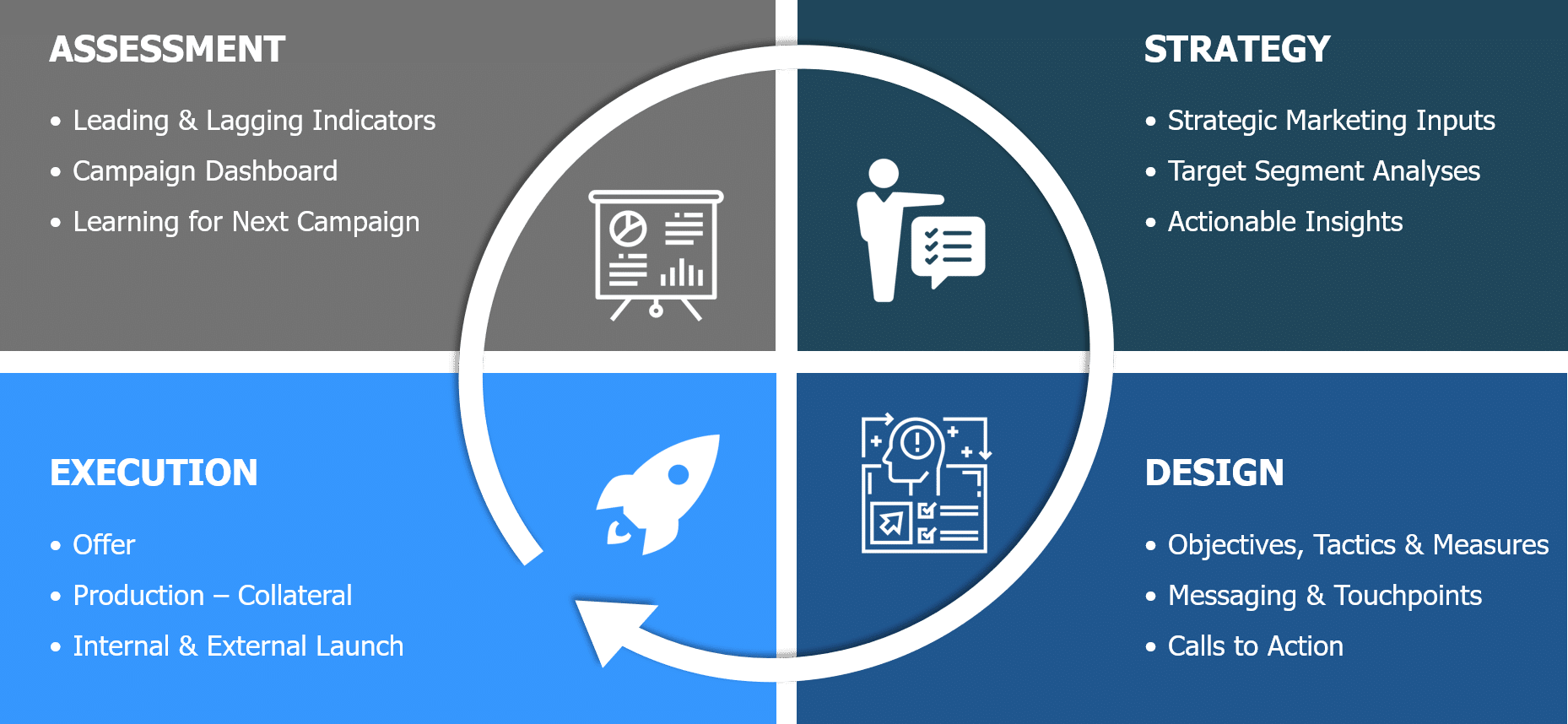Campaign Planning
Effective Campaigns Include Four Elements:
- Set campaign objectives (e.g. qualify >100 leads and begin semi-tech trials with >20 opportunities by end of June) based on priorities from the business unit strategy and associated strategic marketing plan. Complete a ‘deep dive’ to understand the target segment. Use CRM / Salesforce to ‘data mine’ and ensure segment analyses are current. Summarize actionable insights that will drive the campaign (e.g. the target segment is 2x more likely to require a second source, rarely attends industry trade shows and is more likely to be influenced by joint trials).
- Design segment specific messaging, via channels and touchpoints that are differentiated in a meaningful way to the target. Don’t use the ‘usual suspects’! Include meta data tags to track where and how customers are receiving digital campaign messages.
- Execute campaigns internally to gain support from colleagues and deliver a consistent message to the market. A poorly executed internal launch will doom an external launch.
- Assess campaign delivery and adjust execution using campaign dashboards to drive performance. Campaign metrics should include both efficiency (were we able to reach / acquire the target efficiently?) and effectiveness (did the target do what we wanted?).

Market Edge has worked with category leading B2B companies to develop effective product launches and campaigns for the past 25 years. To learn more about our programs related to Campaign Planning and Execution or to attend a Market Edge Academy program on this subject or other related Marketing and Sales topics, go to https://mkt-edge.com/market-edge-academy/.
